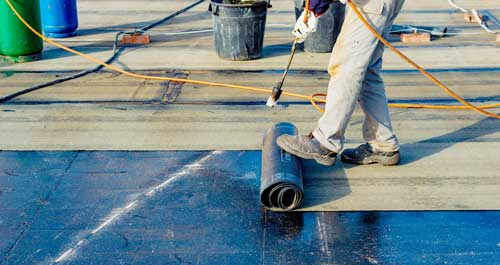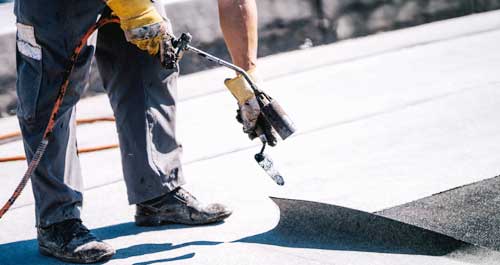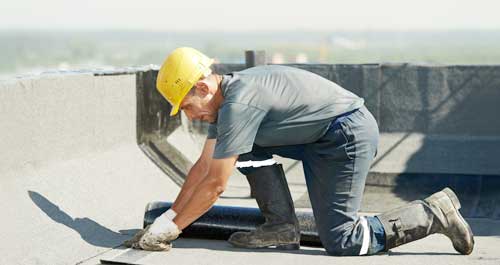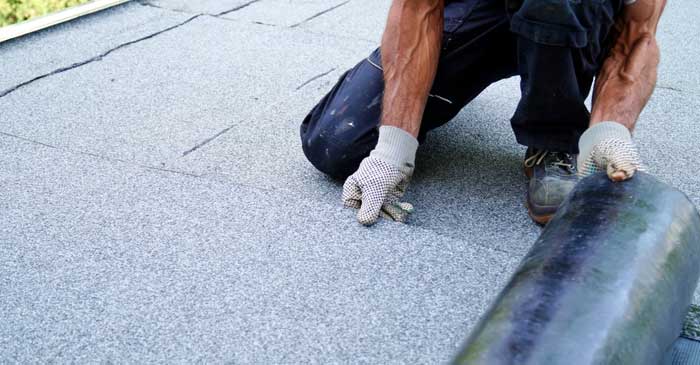How to Install Roll Roofing on a Flat Roof?
Roll roofing is one of the simplest and inexpensive materials to set up as a flat roof on your house. If you are a homeowner, they often advised that you install roll roofing with materials that are over 15# underlayment above your normal roof.
First, determine the ideal roofing that you wanted to use. Decide if you’re going to use either an old asphalt roll roofing or the SBS roofing.
The Traditional Asphalt-Based Roll Roofing has comprised heavy and saturated asphalt organic, or like fiberglass that has a granular surface that that of SBS Modified Asphalt Roll Roofing. All membranes were inspired by SBS, a high-quality synthetic rubber that ensures quality performance compared to traditional asphalt-saturated.
Roll Roofing Installation Details

Through this article, if you are a homeowner, here are the detailed step-by-step instructions about the roll roofing installations on a flat roof:
First, remember, if your roof is flat like its slope is less than 2/12, it is not advisable to install roll roofing. Rather, your option is to use the flat roof system like APP, SBS or EPDM modified and rubber roofing. For the traditional asphalt-impregnated, the overlapped size must be a minimum of 2-3 inches for every single coverage, and for the overlapped on the double coverage, its minimum width must be 16 inches the 2/3 of its width for every 12 inches exposure and 3-ply roof.
On the other hand, for the Styrene Butadiene Styrene (SBS), the installation is commonly about single-ply with at least 3 and 1/2 inches for the overlapped of its sled edge.
Aside from that, if you plan to use fiberglass mineral-surfaced roll roofing, you have to buy a mechanical fastener which can be used for both hot and cold that processes for better adhesive and sealing.
Second, after you prepared all the needed materials, go for the roll roofing job, and be careful of the job sequence.
Here is the must-followed sequence of the roll roofing job:
- Conduct inspection regarding the condition of your existing roof and roof decking.
- Schedule the demolition or the removal of the unused materials that must precede the installation.
- Prepare for the roof protection tarps if the roof might be left open against the inclement weather.
- After that, measure the roof and provide exact calculations about the materials and supplies needed, such as the lap sealant, flashings, nails, roofing, and underlayment.
- Now, your roof underlayment must be installed.
- Next, your valley flashings, or any other sidewall flashing, are now followed to install.
- Edge cant strips around the roof should now be the next to install.
- Prepare the installation of flashing for finishing or whenever required the so-called counter flashing.
OTHER STEPS & SPECIFICATIONS
What Specific Good Weather Condition Is Advised Upon Installation Of The Roof Rolling?
In all kinds of roll roofing, clean, dry, and ambient temperature of 50 degrees must be observed. However, if you are installing it under lower temperatures, put it first inside the house. After that, allow it to expose from the warm temperature to avoid cracking while unrolling.
What Is The Needed Roof Slope?

Your roof slope should be 2/12 or more because the 2 inches is for its rise and the 12 inches is for the horizontal run. Never proceed with the installation when its slope is less than 2 inches.
Roll Roofing Condition.
Upon installation, be sure that it must be very clean and dry. If you install the roofing with bad damage to the edge, it can lead to crushing or tearing. And if you have already seen the bad seaming, there is a chance of early failure cracks across its roofing width.
How About The Roofing Deck?
Every roofing deck must be dry, clean, and must be free of voids. For the re-roofing, all the root decking should be removed and replaced before putting the felt underlayment. You can use the plywood for the roof decking at least 2/8’’ or thicker as it helps to reduce the roof life. And the plywood or any OSB sheathing should be placed between 1/8’’ to ¼’’ in the butt portion to avoid buckling.
Note, if your roof deck has a sag, it might result in ponding. You have to fix them first through shimming or filling upon roof installation. More than that, ponding can also be resulted in subduing the roll roofing job.
What Is Roofing Underlayment?
Be sure to follow the recommendations of the manufacturer about the installation of the underlayment in all portions of the roof deck before proceeding to the covering itself.
The Roof Flashing
Before starting the unrolling of the house’s roof, make sure that all your flashing and drip edges are already in place. You can never go back after the installation of the segment if there is a mistake. All the materials will be wasted.
Preparation Of The Roof Edges-Cant Strips
Nine inches is the size of your strips before installing the drip edges along with the rake and eaves. Then, the plaster strip can now overhang the roof deck by at least ¼’’ up to 3/8’’. The nail and roof edge must be parallel to each other or at least 4’’ space on each row.
The Roofing Over Existing Membranes.

According to the roof rolling installation professional, it is not advised or permitted to roof over with existing membranes. Your roof must be clean, dry, and with no protruding nails because it can easily create a short span of life of the roof.
The Length Of The Roll Roofing
In every roof larger than 36 feet in width, you can already cut the roll roofing into more working lengths and place them on the rear upper portion of the roof’s ridge to flatten them while moving into a flatting down of the installation.
In conclusion, if you don’t have any knowledge about the installation of the roof rolling on a flat roof, you can consult professionals or just take the expert opinion wisely.









Leave a Reply
Want to join the discussion?Feel free to contribute!